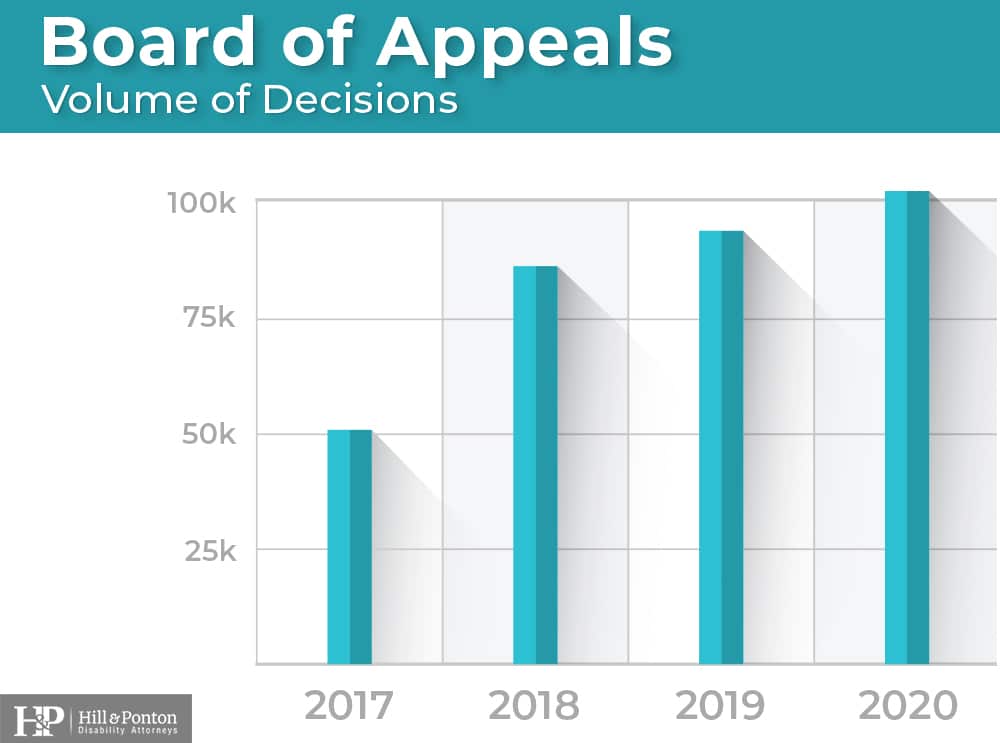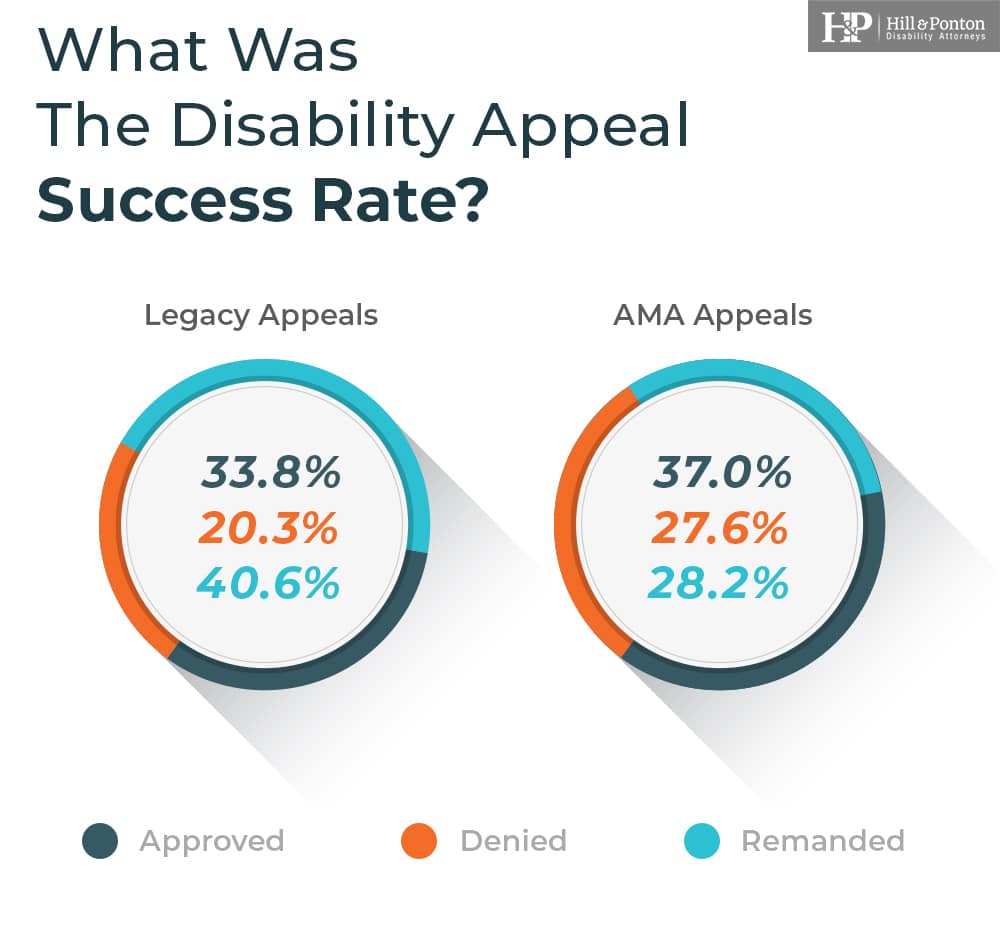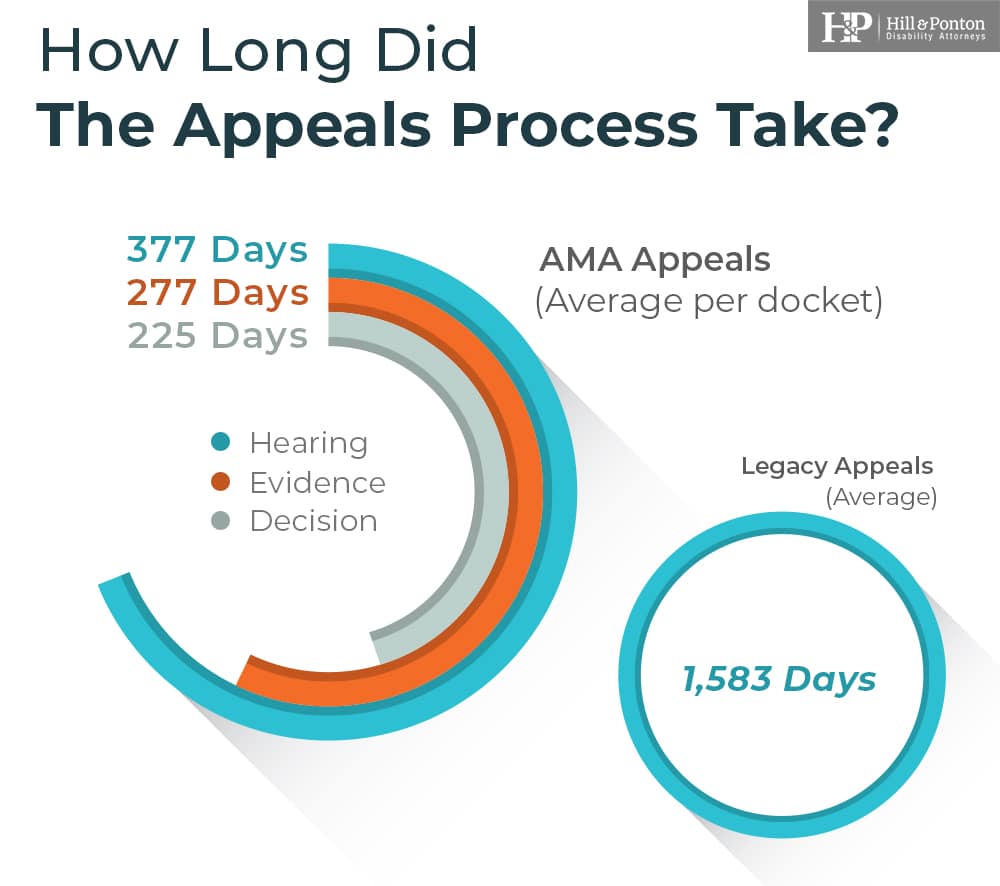It’s no secret that the VA appeals process can be long and complicated. In any given year, the Board of Veterans’ Appeals issues tens of thousands of decisions to veterans around the country, and many of these decisions can take years to come to fruition.
But how many of these appeals are successful?
The Board of Veterans’ Appeals Annual Report for Fiscal Year 2020 offers the latest data on appeals and Board decisions.
By breaking down the statistics, we want to help you understand how your appeal fits into the bigger picture.
How Many Cases Did The Board of Appeals Receive?
In fiscal year 2020, the Board received 174,733 cases and completed 102,663 decisions.
That breaks down to 85,461 legacy decisions and 17,202 AMA decisions.
This volume of decisions marks a clear increase from the previous three years, jumping from 52,661 in 2017, 85,288 in 2018, and 95,089 in 2019.
But that linear increase doesn’t necessarily correlate with the number of cases received per year.
[Pg. 40]

What Was The Disability Appeal Success Rate?
Veterans likely want to know their chances of success when making an appeal.
And while numerous factors play into the Board’s decisions, it can be helpful to understand the yearly approval rates.
The Board of Veterans’ Appeals scheduled 37,345 hearings and held 15,669 in 2020.
Here’s how their decisions played out:
In fiscal year 2020, the Board allowed (approved) 33.8% of the legacy appeals and 37% of the AMA.
As for denials, the Board denied 20.3% of legacy appeals and 27.6% of AMA.
The largest portion of the claims were remanded, meaning they were sent to the veteran’s regional office (RO) with instructions.
Board members remanded 40.6% of legacy appeals and 28.2% of AMA.
[Pg. 38]

How Long Did The Appeals Process Take?
The Board has different data collection systems for legacy and AMA appeals, and it can be tricky to predict how long any one decision will take.
However, data from this report may give veterans an idea.
According to the Board’s 2020 report, the average time lapsed between the filing of the appeal and the Board’s disposition was 1,583 days.
As for the AMA, the VA breaks the average time down per docket.
For veterans who chose the direct review docket, the average time lapsed between the NOD and Board decision was 225 days.
It was 277 days for the evidence docket and 377 for the hearing.
[P. 30 and 31]

Key Takeaways for Veterans
Congress authorized the Veteran Appeals Improvement and Modernization Act of 2017 to give veterans more options for their appeal and speed up the process.
But it’s important to remember that many veterans are appealing through the legacy system as well.
If you’re a veteran looking for support for your VA disability appeal, the attorneys at Hill & Ponton are here to help.
Contact us today for a free case evaluation.




